Best Types of Champagne To Serve At An Engagement Party
25th January 2024
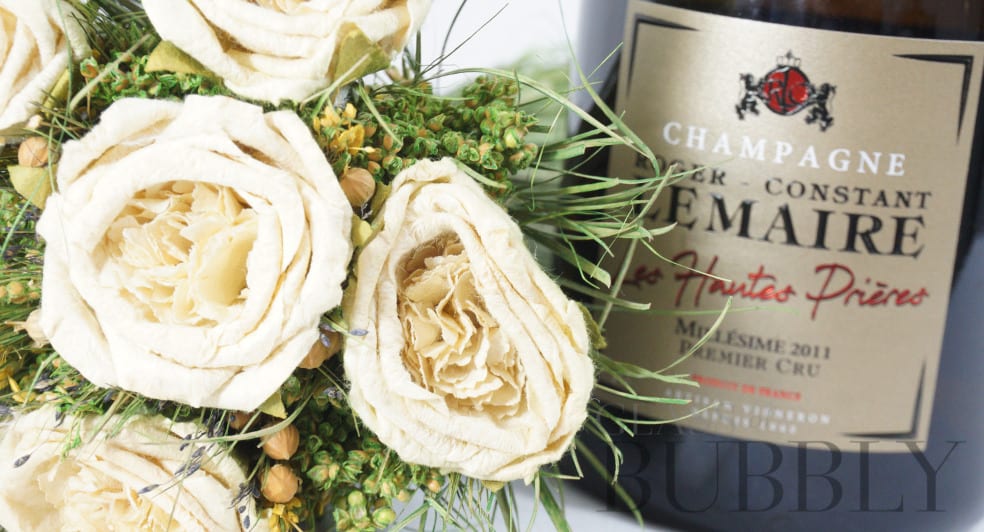
Champagne, a sparkling wine, has long been synonymous with celebrations and special occasions. Originating from the Champagne region in France, its production involves a meticulous process known as the ‘méthode champenoise’. This method includes a secondary fermentation in the bottle, creating the effervescence that champagne is famous for. Champagnes are categorized based on their sweetness: Brut (dry), Extra Dry (slightly sweet), and Demi-Sec (sweet), offering a range to suit various palates and occasions.
Top Picks for Engagement Parties
Classic Choices: Non-Vintage Champagnes
Non-Vintage Champagnes are a cornerstone in the world of sparkling wines, renowned for their consistent quality and approachable flavors. Unlike their vintage counterparts, which are produced from grapes of a single year, non-vintage Champagnes are masterful blends of multiple years’ harvests. This blending ensures a consistent house style year after year, a signature profile that Champagne enthusiasts have come to appreciate and expect.
The art of creating a non-vintage Champagne lies in the skill of the ‘chef de cave’ or cellar master. They meticulously blend wines from different years, often incorporating ‘reserve wines’ – wines held back from previous years – to achieve the desired flavor profile. The proportion of reserve wines can vary from 10% to over 50%, depending on the Champagne house’s style and the characteristics of the year’s harvest. This blending process allows for a harmonization of flavors, smoothing out the variances of single vintage years.
Non-vintage Champagnes typically spend at least 15 months aging in the cellar, though many top houses exceed this minimum, aging their Champagnes for three years or more. This aging process contributes to the complexity and depth of the Champagne. When you sip a glass of non-vintage Champagne, you’re tasting a wine that carries the legacy and expertise of its makers, a blend of years, each adding its unique touch to the final product.
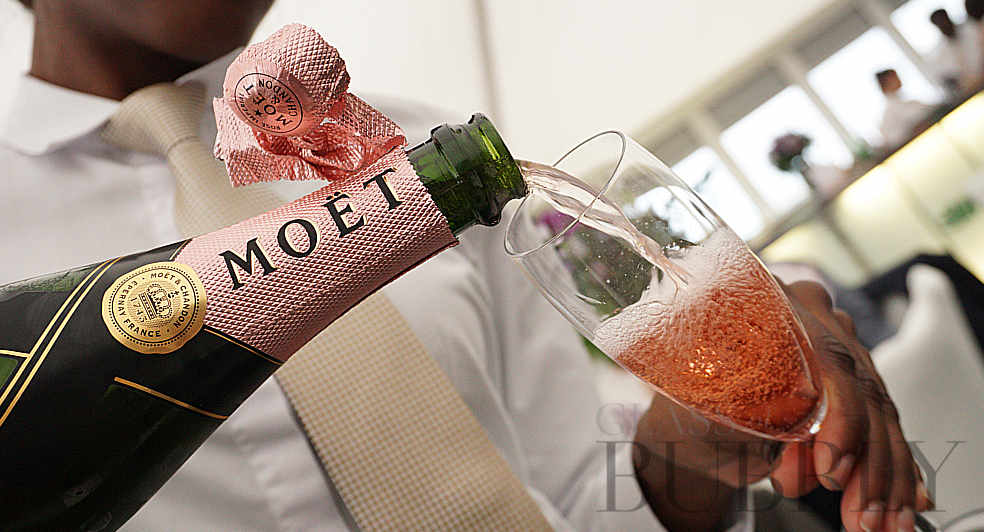
In the realm of non-vintage Champagnes, there are notable standouts that are perfect for engagement parties. Moët & Chandon Imperial, a household name, is lauded for its bright fruitiness and seductive palate, blending Pinot Noir, Pinot Meunier, and Chardonnay. Another popular choice, Veuve Clicquot Yellow Label, is admired for its rich, toasty notes, a result of its higher proportion of Pinot Noir. These Champagnes offer a delightful balance of richness, acidity, and complexity, making them ideal for toasting a newly engaged couple.
Their versatility extends beyond toasting; non-vintage Champagnes are incredibly food-friendly. They pair wonderfully with a variety of dishes, from delicate seafood appetizers to richer poultry and pork. This versatility makes them a practical and elegant choice for an engagement party, where menus might vary and guests’ tastes differ.
Opting for a non-vintage Champagne at an engagement party also offers a pragmatic advantage in terms of cost-effectiveness. Generally, more affordable than their vintage and prestige cuvée counterparts, non-vintage Champagnes allow hosts to offer their guests the luxury of Champagne while adhering to a budget.
Non-vintage Champagnes are a celebration of the Champagne house’s style, a testament to the art of blending, and an embodiment of consistency and quality. Their approachable complexity, combined with their ability to pair with a range of foods, makes them an ideal choice for an engagement party, ensuring the Champagne experience is as memorable as the occasion it honors.
Premium Selection: Vintage Champagnes
Vintage Champagnes are the epitome of exclusivity and refinement in the world of sparkling wines. They are crafted only in exceptional years when the grape harvest is of outstanding quality. Unlike non-vintage Champagnes, which are blended from multiple years to achieve a consistent house style, vintage Champagnes are produced from grapes all harvested in the same year, capturing the unique characteristics of that particular growing season.
The decision to declare a vintage year lies with each Champagne house and is a testament to the quality of the grapes harvested that year. These Champagnes are produced in limited quantities, making them more sought-after and often more expensive than non-vintage options. They are aged for a minimum of three years, though many top houses age their vintage Champagnes for much longer, sometimes up to a decade or more. This extended aging process allows the Champagne to develop greater complexity and depth of flavor.
A vintage Champagne typically exhibits a richer, more nuanced profile than its non-vintage counterpart. The aging process allows the development of secondary and tertiary aromas and flavors, such as toasted nuts, brioche, honey, and dried fruits. These complex flavors are highly prized among connoisseurs and make vintage Champagnes particularly suitable for more sophisticated engagement parties.
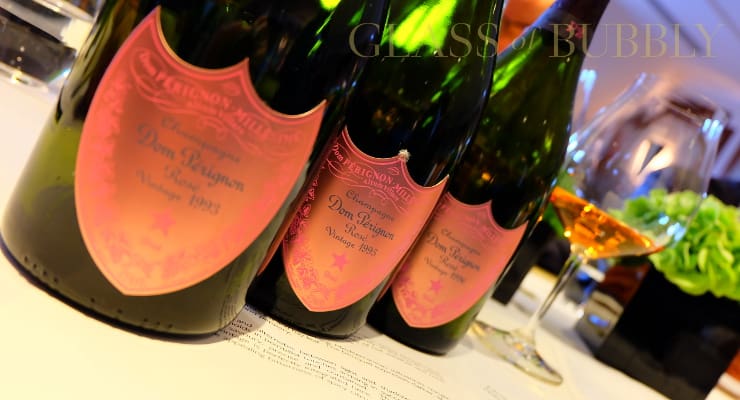
One of the most revered vintage Champagnes is Dom Pérignon, named after the Benedictine monk who made significant contributions to the quality and production of Champagne in the 17th century. A bottle of Dom Pérignon, such as the celebrated 2008 vintage, is known for its perfect balance and harmony, offering a symphony of rich, toasty flavors combined with fresh acidity and floral notes.
Another notable vintage Champagne is the Louis Roederer Cristal. Initially created in 1876 for Alexander II of Russia, this Champagne is synonymous with luxury. Known for its precise balance and depth, with flavors ranging from citrus blossom to toasted hazelnut, Cristal is a truly memorable choice for a special toast.
Serving a vintage Champagne at an engagement party can be a meaningful gesture, symbolizing the unique and exceptional journey of the couple’s relationship. It’s a way to honor the special year of their engagement with a product of another remarkable year.
When selecting a vintage Champagne, it’s essential to consider its pairing potential with the menu. Vintage Champagnes, with their complex flavor profiles, pair well with sophisticated dishes such as lobster, caviar, or fine cheeses. Their rich, nuanced flavors can elevate the dining experience at an engagement party, complementing the overall elegance of the event.
Vintage Champagnes, with their rarity, distinctive character, and depth of flavor, are an excellent choice for those looking to add an element of luxury and exclusivity to their engagement celebration. They not only offer a superior tasting experience but also bring a sense of uniqueness and personalization to the special occasion, reflecting the extraordinary journey of love and commitment.
Luxury and Prestige: Prestige Cuvées
Prestige Cuvées stand at the pinnacle of Champagne excellence, embodying the utmost in luxury and craftsmanship. These are the flagship Champagnes of their respective houses, crafted from the finest grapes sourced from the most esteemed vineyards. The creation of a Prestige Cuvée is a testament to a Champagne house’s dedication to excellence, showcasing their highest skills in viticulture and winemaking.
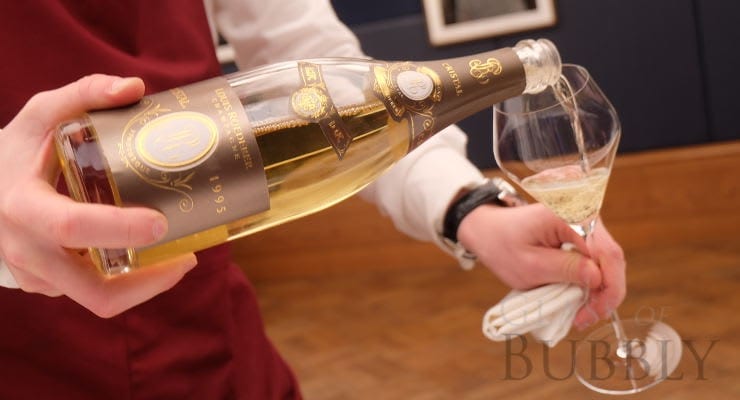
The concept of Prestige Cuvées was pioneered in the 20th century, with the introduction of Louis Roederer’s Cristal in 1876 leading the way. These Champagnes are often synonymous with opulence and exclusivity, frequently associated with state dinners, elite gatherings, and significant celebrations like engagement parties.
Prestige Cuvées are distinguished not only by their exceptional quality but also by their limited production. Each bottle is the result of meticulous selection and blending of the finest base wines, often from grand cru vineyards. The aging process for these cuvées typically extends far beyond the legal minimum for Champagne, often lasting five years or more. This prolonged maturation allows the development of a profound depth of flavor and a complexity that is unrivaled.
The flavor profile of a Prestige Cuvée is characterized by its sophistication and elegance. These Champagnes often exhibit a perfect balance of richness and finesse, with a complexity of flavors ranging from ripe stone fruits and citrus notes to brioche, toasted nuts, and a hint of minerality. The mousse (bubbles) in a Prestige Cuvée is typically finer and more persistent, contributing to a more refined and luxurious mouthfeel.
One of the most iconic Prestige Cuvées is Dom Pérignon, named after the legendary monk who contributed significantly to the development of Champagne. Dom Pérignon is known for its perfect harmony and precision, with each vintage expressing the character of the year while maintaining the house’s signature style.
Another exemplary Prestige Cuvée is Krug’s Grande Cuvée. Krug is unique in its extensive use of reserve wines in the blend, some aged for up to 15 years. This approach creates a richness and depth of flavor that is unparalleled, making it a symbol of sophistication and an ideal choice for an engagement party where impressing guests is key.
Choosing a Prestige Cuvée for an engagement party signifies not just a celebration of a special moment, but an expression of the highest regard for the occasion and the guests. It’s a statement of grandeur and exclusivity, suitable for an event that marks a significant milestone in a couple’s life.
When serving a Prestige Cuvée, it’s essential to pay attention to the details that enhance its enjoyment. Serving temperature should be carefully managed, typically around 9°C to 12°C, and the Champagne should be poured into appropriate glassware to allow the bouquet to develop fully and the delicate mousse to be appreciated.
Prestige Cuvées represent the zenith of Champagne-making, offering an unparalleled experience in luxury and taste. Their rarity, exceptional quality, and the craftsmanship involved in their production make them the ultimate choice for an engagement party that aims to be remembered as a pinnacle of elegance and sophistication.
Rosé Champagnes: Adding a Touch of Color and Romance
Rosé Champagnes are celebrated for their distinctive color and unique flavor profile, making them a popular choice for special occasions, particularly engagements, where their romantic hue perfectly complements the sentiment of the event. These Champagnes add a touch of elegance and festivity, standing out both visually and in terms of taste.
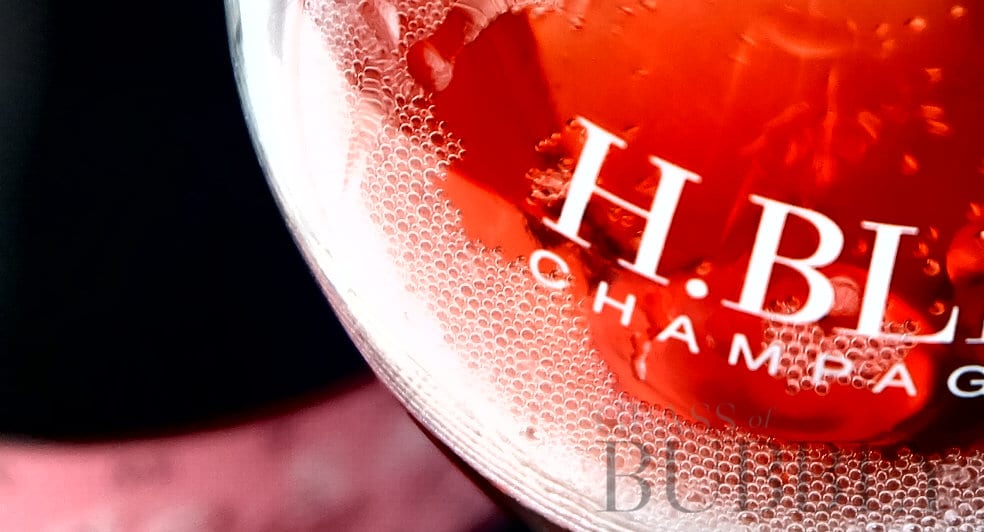
The allure of rosé Champagne lies in its production process, which differentiates it from its white counterparts. There are two primary methods used to create rosé Champagne: the blending method and the saignée method. The blending method, more commonly used, involves adding a small amount of red wine to a base of white wine before the second fermentation. This technique allows for precise control over the color and flavor of the final product. The saignée method, on the other hand, involves ‘bleeding’ off juice from red grape skins after a short period of contact, imparting a natural pink hue and a more pronounced red fruit character.
Rosé Champagnes typically showcase a broader and more pronounced range of flavors compared to white Champagnes. They often exhibit notes of red fruits like strawberries, raspberries, and cherries, combined with hints of citrus and sometimes a subtle spicy or floral quality. The balance between fruitiness and freshness is a hallmark of well-made rosé Champagne, making it both delightful to taste and versatile in pairing with food.
Laurent-Perrier Cuvée Rosé is a notable example in this category. It stands out for its expressive bouquet of fresh red berries and its remarkable consistency in quality. Its aging process, longer than most rosé Champagnes, contributes to its depth and complexity. Another esteemed rosé Champagne is Moët & Chandon Rosé Impérial, which is known for its vibrant fruitiness and seductive palate. This Champagne is particularly favored for celebrations due to its appealing combination of taste and aesthetics.
Serving rosé Champagne at an engagement party adds a visually stunning element to the celebration. Its color, varying from a subtle salmon to a deep rose, not only enhances the aesthetic of the setting but also symbolizes love and happiness, resonating with the occasion’s sentiment. When chilled to the right temperature, around 8°C to 10°C, the crispness and vivacity of rosé Champagne come alive, making it an ideal aperitif or a companion to a range of dishes, from light canapés to seafood and poultry.
The choice of rosé Champagne for an engagement party also offers a modern twist on tradition. It reflects a contemporary and stylish approach, appealing to those who wish to add a unique and memorable aspect to their celebration. Whether enjoyed on its own or as part of a sophisticated cocktail, rosé Champagne is sure to leave a lasting impression on guests.
Rosé Champagnes blend the classic elegance of Champagne with a vibrant twist, making them an excellent choice for engagement parties. Their enchanting color, rich flavor profile, and romantic connotations elevate the celebratory atmosphere, making the event not just a gathering but a truly memorable experience.
Demi-Sec Champagnes: A Sweeter Celebration
Demi-Sec Champagnes, with their subtly sweet profile, offer a delightful alternative to the traditional brut Champagnes, catering to those who enjoy a touch of sweetness in their celebrations. These Champagnes hold a special place in the world of sparkling wines, offering a harmonious blend of sweetness and acidity that appeals to a wide range of palates, particularly during joyous occasions like engagement parties.
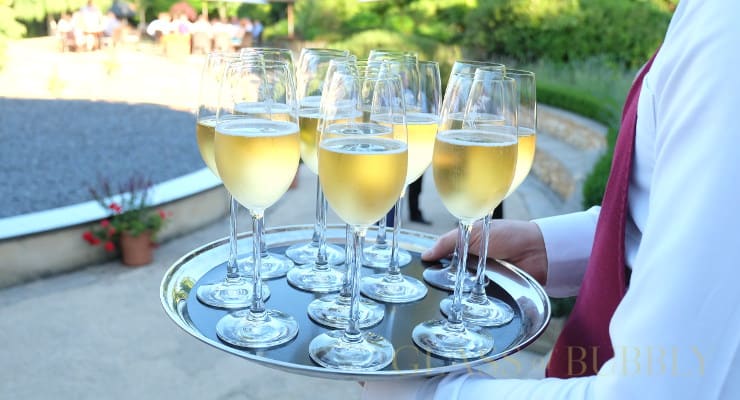
The term ‘Demi-Sec’, translating to ‘half dry’, is somewhat misleading as it implies a level of dryness. In reality, Demi-Sec Champagnes are noticeably sweeter than brut Champagnes. The sweetness in Demi-Sec Champagne is achieved by a process called ‘dosage’, where a mixture of wine and sugar, known as ‘liqueur d’expédition’, is added after the second fermentation and before the final corking. The amount of sugar in this mixture determines the Champagne’s sweetness level. Typically, Demi-Sec Champagnes contain between 32 and 50 grams of sugar per liter, striking a balance that accentuates the wine’s fruitiness without overwhelming its natural flavors.
One of the appealing aspects of Demi-Sec Champagne is its versatility in food pairing, particularly with desserts and spicy cuisines. The inherent sweetness of these Champagnes complements a variety of dessert options, from fruit tarts to creamy pastries. They also beautifully offset the heat in spicy dishes, making them a popular choice for engagement parties that feature a diverse menu.
Veuve Clicquot Demi-Sec is a prominent example in this category, celebrated for its rich, fruity character and smooth finish. This Champagne, with its hints of ripe pear, peach, and toffee, is a perfect accompaniment to sweet treats, adding an extra layer of indulgence to the dessert course. Moët & Chandon Nectar Impérial is another exquisite Demi-Sec Champagne, known for its lush sweetness and vibrant fruitiness. It pairs exceptionally well with exotic and spicy dishes, bringing a harmonious balance to the palate.
Serving Demi-Sec Champagne at an engagement party offers a unique experience, catering to guests who prefer a sweeter sip. Its presence can add a sophisticated touch to the celebration, especially when it comes to toasting the couple. The sweetness of Demi-Sec Champagne can symbolically represent the sweetness of the couple’s love and future life together.
When serving Demi-Sec Champagne, it’s important to chill it to the right temperature, around 6°C to 8°C, which enhances its flavors and effervescence. Serving it in a flute or tulip-shaped glass can also enhance the tasting experience, allowing the aromas and bubbles to develop fully.
Demi-Sec Champagnes provide a delightful and often overlooked option for celebratory events. Their balanced sweetness, combined with the sophistication of Champagne, makes them an ideal choice for engagement parties. These Champagnes offer a sensory experience that is both indulgent and elegant, perfectly complementing the joyous and festive atmosphere of the occasion.
Personalizing Your Choice
Selecting the right Champagne requires considering the preferences of your guests, the season, and the atmosphere of your engagement party venue. For a summer outdoor celebration, lighter, fruitier Champagnes may be more refreshing, while richer, more robust Champagnes might suit a cosy winter gathering. Serving Champagne at the right temperature, between 8°C and 10°C, enhances its flavors and aromas, elevating the entire experience.
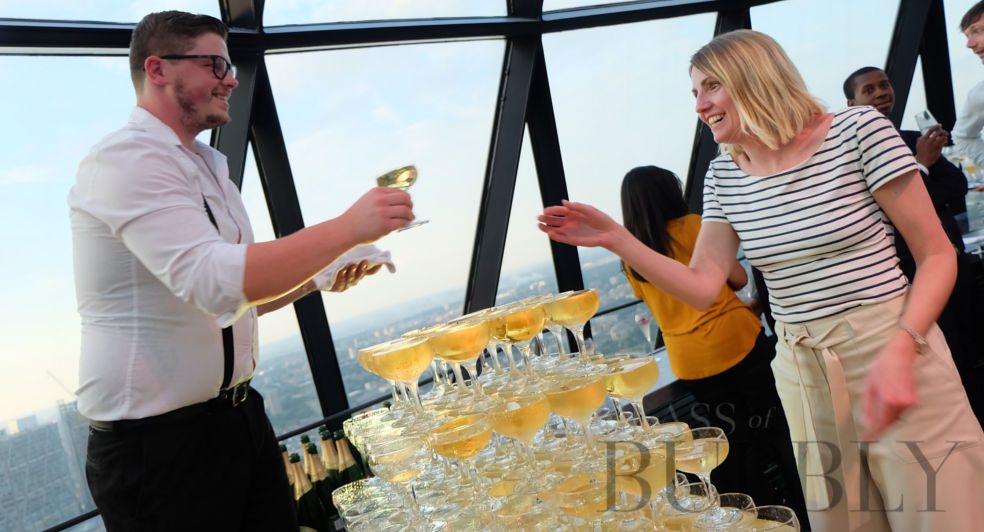
Party Celebrations at the Gherkin in London – Champagne Towers
Where to Buy: Sourcing Your Champagne
Finding the perfect Champagne can be a journey in itself. Local wine merchants often offer a curated selection and valuable advice. For a wider range, online retailers provide extensive options, often with detailed tasting notes. Budgeting for Champagne involves not only the price per bottle but also the number of guests. A standard bottle of Champagne holds about six glasses, so plan accordingly to ensure every guest can partake in the celebratory toast.
In crafting this in-depth exploration of the best types of Champagne to serve at an engagement party, we’ve delved into the nuances of Champagne types, from the classic non-vintage to the luxurious prestige cuvées. Each type offers a unique experience, making the celebration not just a moment, but a memory to cherish. As you prepare for this special occasion, remember that the best Champagne is not just about price or prestige, but about the joy and love it brings to your celebration.
![]()
Glass of Bubbly Content
Content shared by this account is either news shared free by third parties or advertising content from third parties and affiliations. Please be advised that links to third party websites are not endorsed by Glass of Bubbly Ltd - Please do your own research before committing to any third party business promoted on our website.
